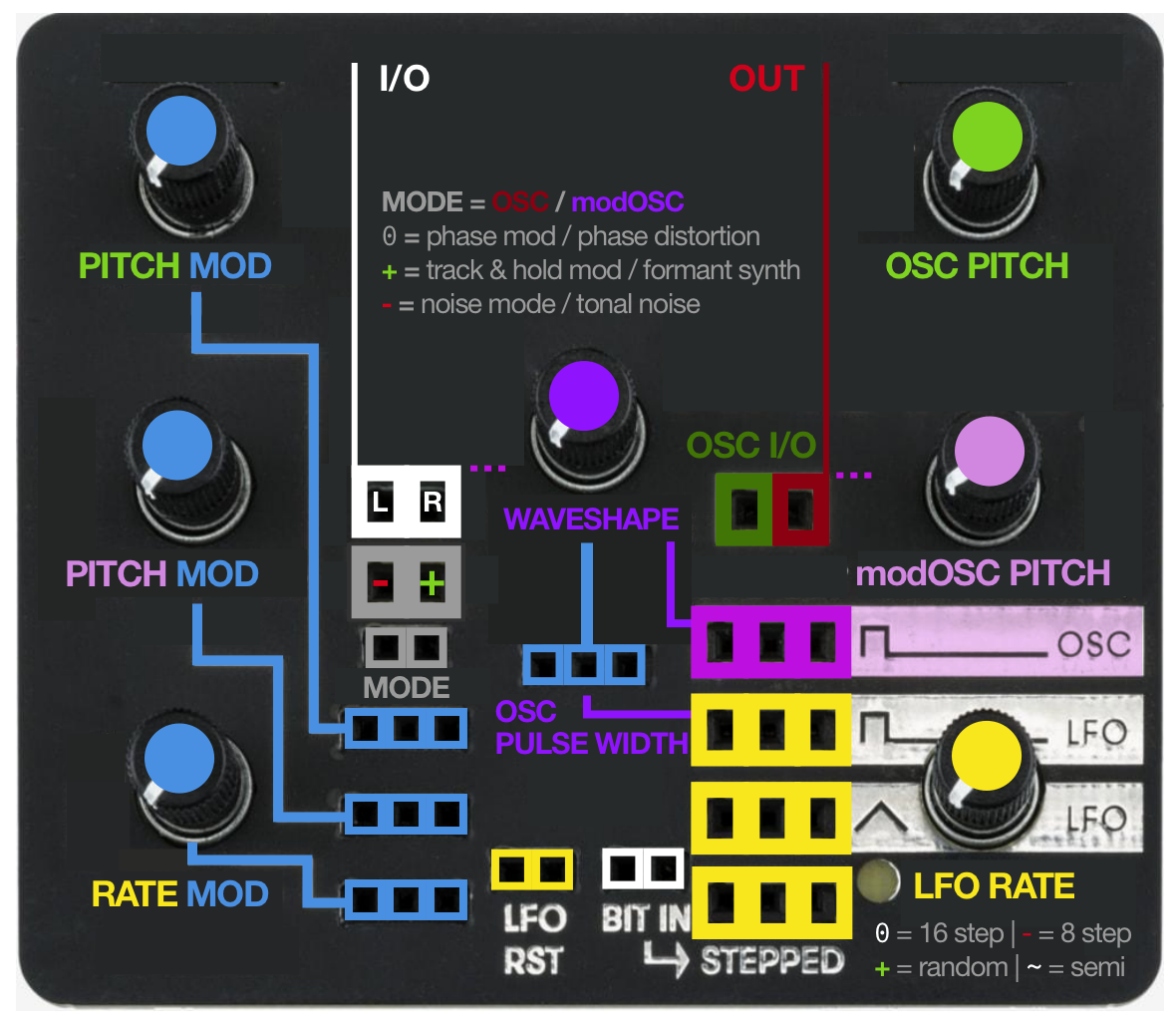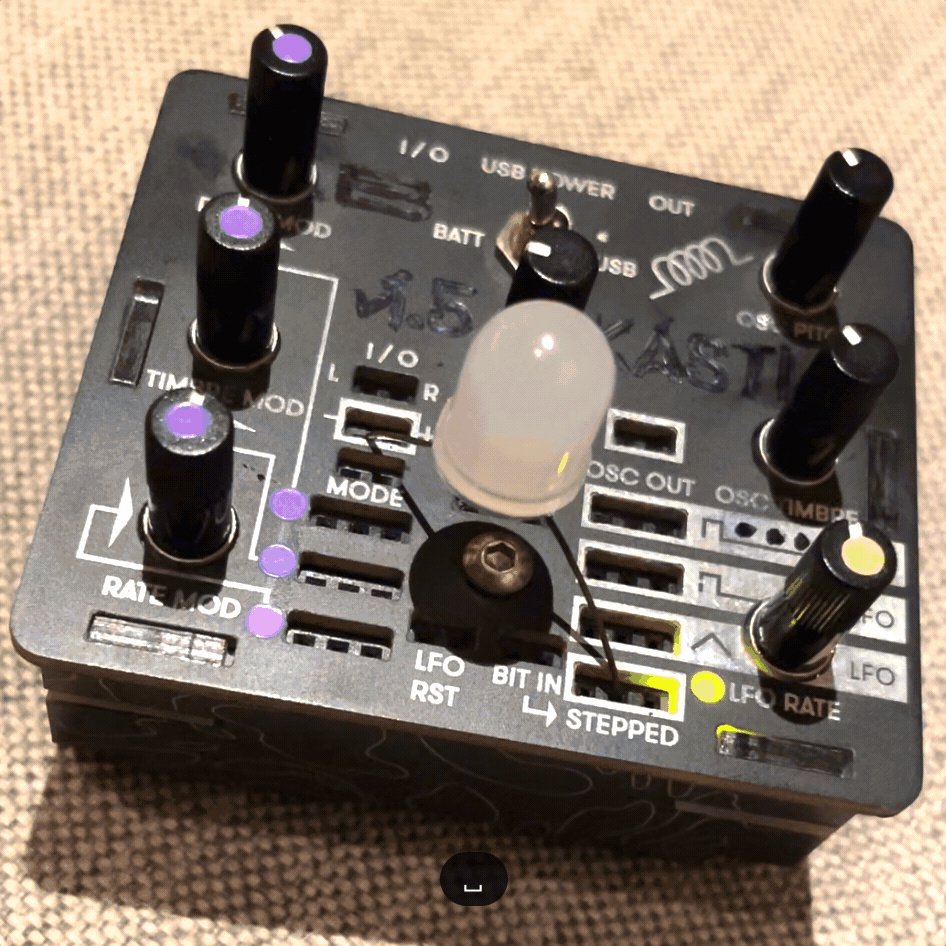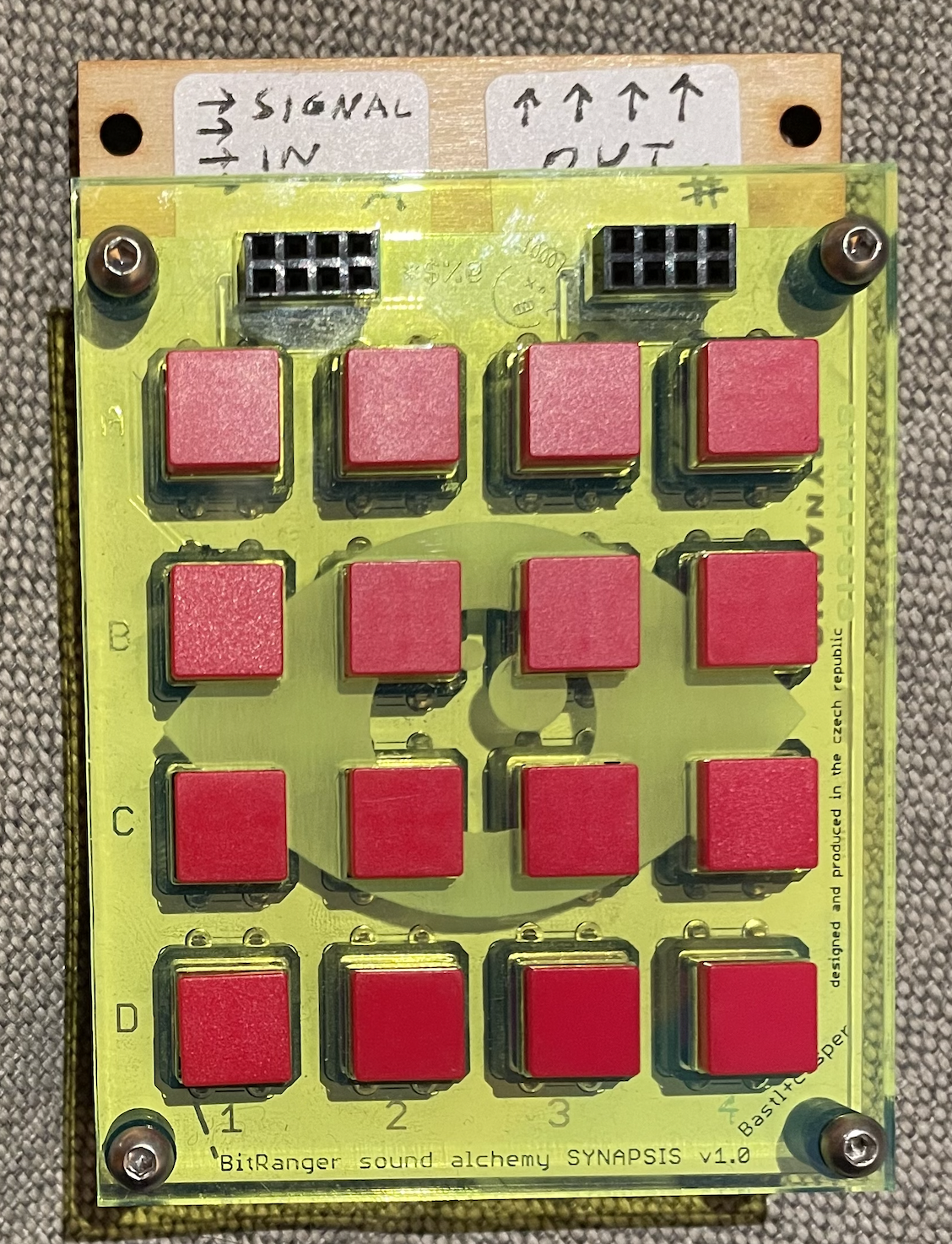
The Kastle is a complex oscillator that fits in the palm of your hand and can connect to a bunch of different things, including modular synths. It has an open-ended I/O jack (headphone type) that just directly connects to breadboard sockets in the device itself, which means you can both send signals into the Bastl and out of it, or both.
It also has a generic ground socket, and a "voltage high" socket, which really makes this blur the line between music and electronics.


Another thing to remember about it is that you can add signals together. That's why most of the inputs aren't just one socket. Modulate pitch with an LFO, and then add + to pitch it even higher, for example.
Here's a list of the stuff that can be hard to remember:
OSC I/O can be used as:
- another signal for your patch
- any other output connected to this output will be passively mixed with the oscillator output and will go to the OUT jack.
- adding more power by connecting the modOSC OUT.
+ and -
- you can use the low = ”–” or high = ”+” sockets to set synth modes.
- Also useful to set the BIT IN pin.
- + can be used to offset any modulation signal
- – connects directly to ground so it can be used to connect grounds between several instruments or other components.
STEPPED:
This generator can produce 8 different voltages. It generates new voltage twice per period of the LFO (every time the direction changes from rising to falling). The voltage is based on the current state of 3 bits of internal binary 8 bit shift register. The shift register is shifted with every new voltage generated.
BIT IN:
- low = bit remains the same = 8 step pattern
- high = bit is generated randomly = random pattern
- 0 (not connected) = bit is inverted = 16 step pattern
- alternating = semi-random pattern
STEPPED is very useful for modulating every parameter in the Kastle synth or any external device with the I/O port.
Questions I'm left with:
- Why do I hear the main OSC as well when I patch the mod OSC only to I/O
- Why do the modulation pots on the left affect the sound even when nothing is connected to them
- Related: What internal normalizations, if any, does this thing have? Eg what's connected to what by default even when nothing is plugged in?
Synth MODEs you can set (directly from the manual):
- 0 - Phase modulation (main OSC) Very similar to linear FM (frequency modulation), phase modulation is a method pioneered by John Chowning and later used byYamaha in their famous DX synths. Kastle implements only two operator sinewave PM with a modulation amount. PITCH sets the main oscillator (carrier), TIMBRE sets the modulating oscillator (modulator) and WAVESHAPE sets the amount of modulation.
- 0 - Phase distortion (mod OSC) It was historically first used in 1984 in Casio synths of the CZ range. It is based on two synced ramp oscillators. The synced (higher tuned) oscillator is scanning the sine wave wavetable and is multiplied by the inverse of the lower tuned oscillator. In practical terms this was supposed to emulate sweeps of a resonant filter on a sawtooth waveform. The implementation in Kastle is an adaptation of this method with wider ranges on the oscillators and more formant-vocally character. There is also the third WAVESHAPE parameter which crossfades from secondary sine wave thru soft synced sinewave all the way to the phase distortion.
- + - Track & Hold Modulation (main OSC) This is a not so common synthesis method. The main sine wave oscillator is going thru a comparator which turns it into a variable pulse width waveform which is gating a track & hold circuit. The second oscillator is being fed thru the track & hold which means that when the pulse of the main oscillator is high the signal passes and when it becomes low it holds static voltage. The threshold (WAVESHAPE) on the comparator sets the pulse width and therefore the amount of the modulation while the PITCH and TIMBRE set the frequencies of the oscillators.
- + - Formant synthesis (mod OSC) This mode is inspired by the Helmholz Synthesizer (made in 1905) which was an acoustic synthesizer based on several pitchforks tuned as several harmonic multiples of a fundamental frequency that have been amplified by adjusting a mechanical shutter of an acoustic resonator of corresponding frequency. Such a device could emulate vowel sounds made up by sine waves of different harmonic frequencies mixed together. On Kastle the WAVESHAPE knob selects different combinations of harmonic frequencies and their proportions built up on the secondary oscillator. Because the combinations of formants are stepped, modulating the WAVESHAPE results in musical arpeggios.
- - - Noise Mode (main OSC) The Noise mode on Kastle is implemented by a granular playback of the flash memory (where the program is stored) of the sound processing chip. In other words it is a data player of a piece of computer code (that runs the sound core of the Kastle synth) that has very distinct sonic qualities on its own - often referred to as “glitch” in aesthetic terms. However this mode is so purposeful that instead of talking about a mistake we should be talking about being true to what the true nature of Kastle truly is in very modernistic terms (it is a digital synthesizer). The PITCH controls the speed of the playback, the WAVESHAPE controls the loop length of the playback and the TIMBRE controls the secondary oscillator that modulates the amplitude of the final signal.
- - - Tonal Noise Mode (mod OSC) A byproduct of the Noise mode while enhancing the PITCH of the secondary oscillator which is tuned a few octaves higher than in the normal noise mode. In this mode the oscillator is implemented as a thru zero oscillator meaning that from a certain position (11 o‘clock) the PITCH rises in both directions but in a different phase.
